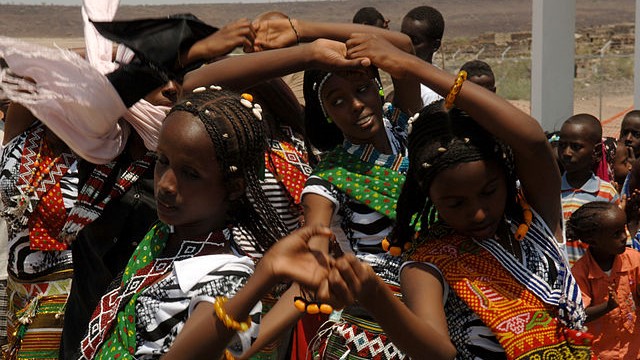On warm evenings in Djibouti City, the air often fills with the thrum of drums and the hum of voices rising in chorus. In dusty courtyards or beneath the glow of streetlights, dancers gather, their movements tracing stories that predate the nation’s borders. Here, dance is not merely performance; it is a vessel of history, memory, and belonging.
Each rhythm, each step, carries the imprint of the country’s layered identity. The dances of Djibouti are rooted in a mosaic of traditions, drawing from Afar, Somali, and Arab heritage. Movements differ between communities—some swift and jubilant, others measured and ceremonial—yet all share the same function: to transmit meaning across generations.
Among the most renowned is the Gabay, a spirited performance often unfolding at weddings, festivals, and communal gatherings. Its choreography is lively, yet its essence lies in the words—lyrical poetry that celebrates ancestry, valor, and kinship. The dancers’ bodies speak in gestures as eloquent as the verse itself, weaving a dialogue between past and present.
In contrast, the Maalim evokes moments of historic significance. It is a narrative dance, telling of battles won, loves endured, and hardships overcome. The pace may shift from solemn to exultant, reflecting the turns of the story. To watch is to witness the embodiment of Djibouti’s collective memory.
Some dances belong to the sacred realm, performed during religious ceremonies intended to bless and protect the community. Drums beat in hypnotic patterns while voices chant in unison, lending the moment a sense of gravity. These rituals blur the line between the earthly and the divine, reinforcing the role of dance as a spiritual conduit.
In a region where global influences grow ever more pervasive, these traditions remain both anchor and compass. They connect the youth to their elders, affirming that heritage is not a static relic but a living, evolving force. The steps may be old, but their relevance is renewed each time a dancer takes the floor.
As long as the drums sound and the circle of dancers holds, Djibouti’s cultural pulse will continue to beat—steady, insistent, and unmistakably its own.
Sources:
- Ali, Ahmed. Cultural Expressions of the Horn of Africa. Addis Ababa University Press, 2018.
- UNESCO. “Intangible Cultural Heritage: Traditional Dance Practices in Djibouti.” UNESCO, 2021.
- Warsame, Fatima. “The Poetic Movements of the Gabay.” Horn of Africa Journal, vol. 14, no. 2, 2019, pp. 45–59.

